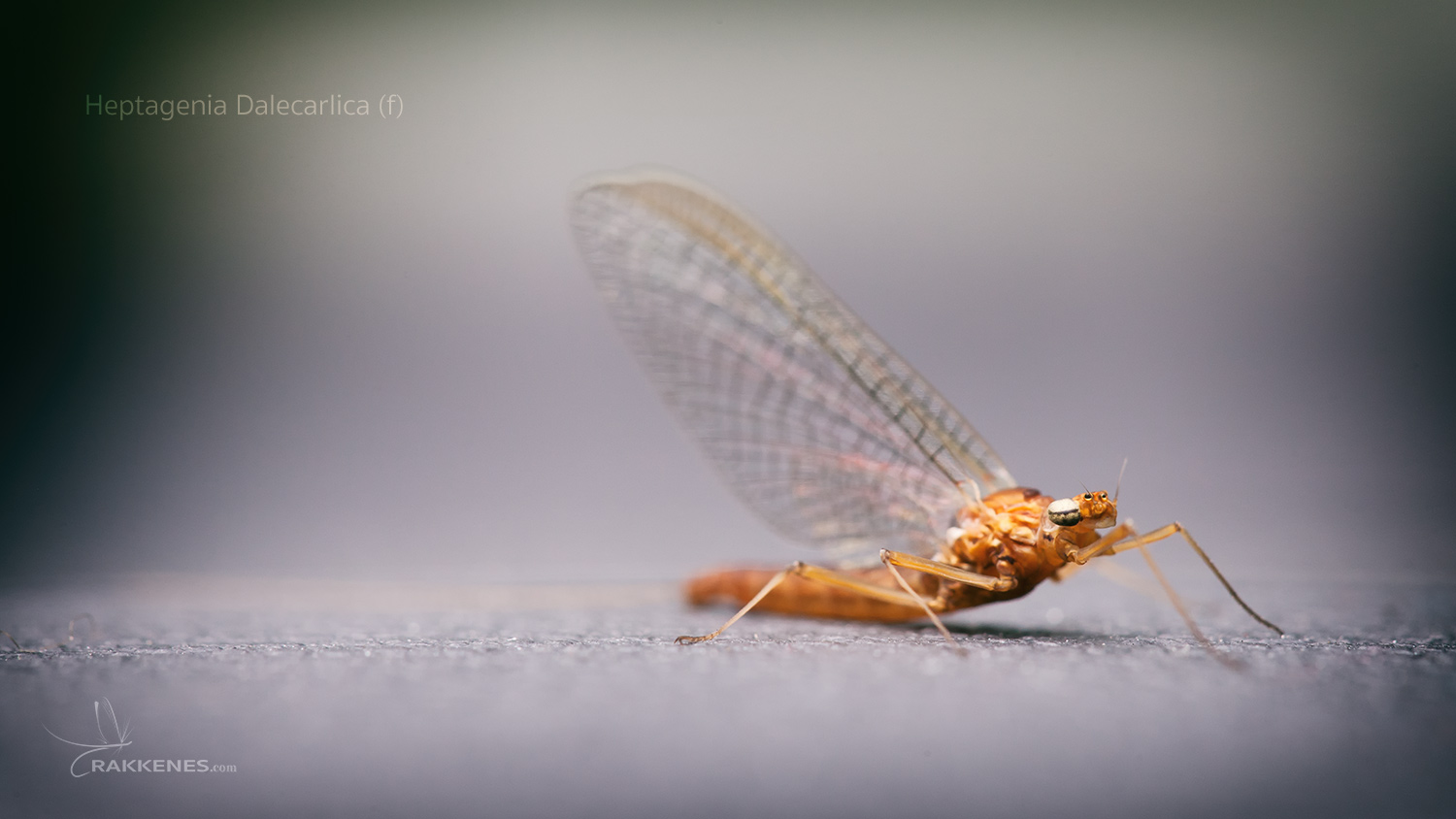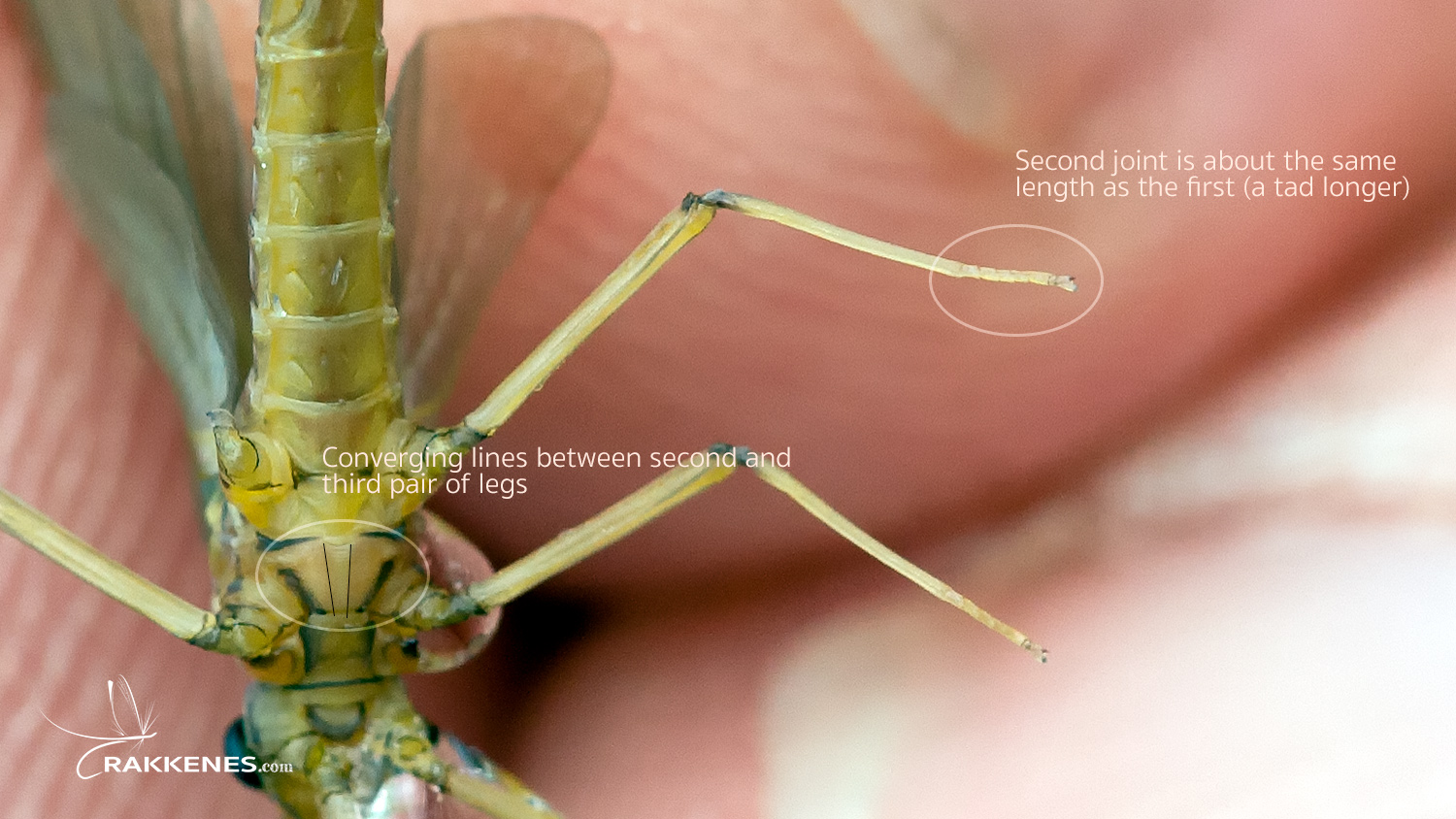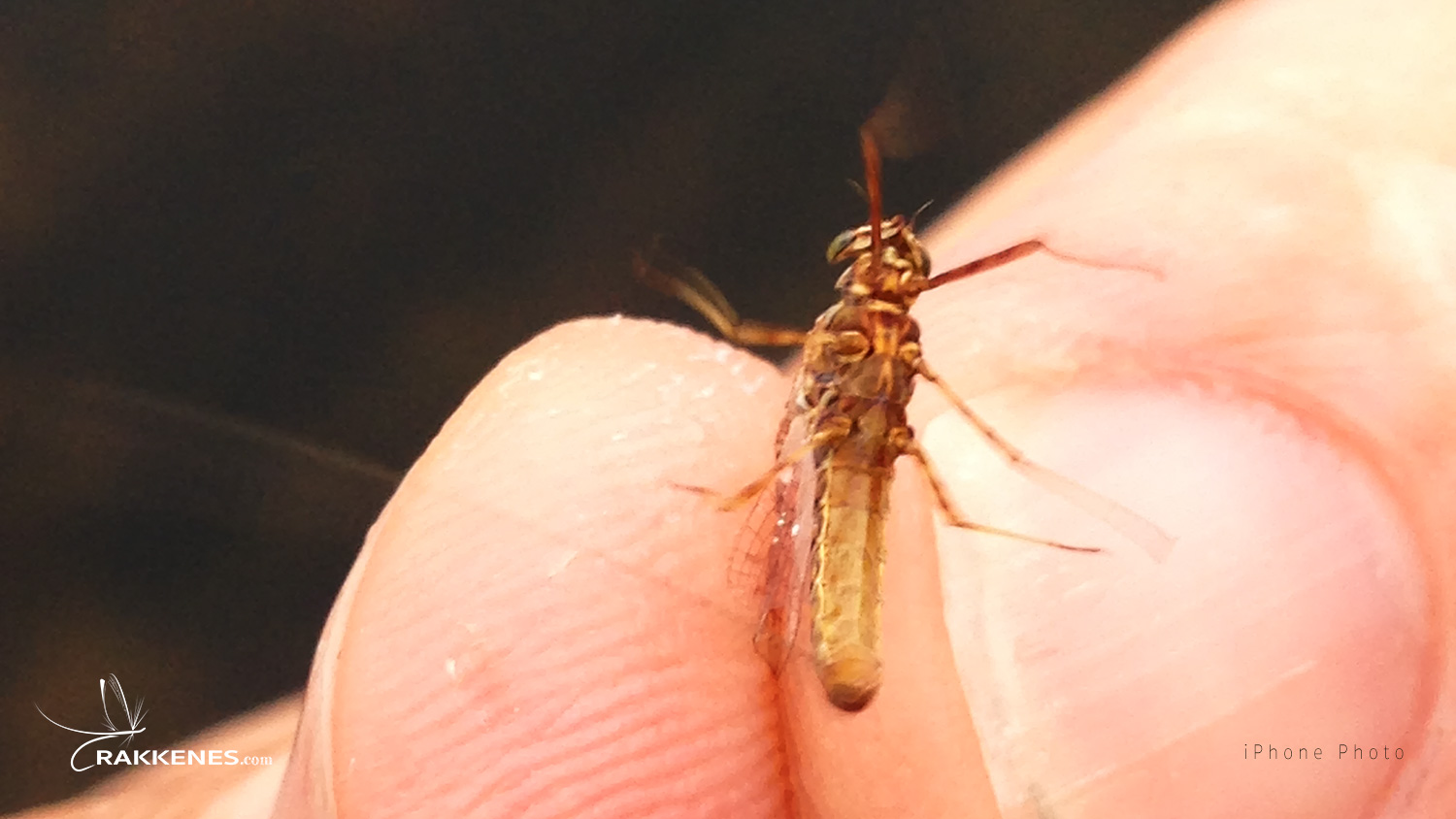Thriving in cold water and up in the mountains, the Heptagenia Dalecarlica may righfully be called the Sulphur of the north. They are just as beautiful, but the Heptagenia Dalecarlica can be difficult to distinguish from the Sulphurea.
As with many other mayfly species, the Heptagenia Dalecarlica was first discovered by the Swedish entomologist Simon Bengtsson. The discovery of the Heptagenia Dalecarlica is dated to 1912.
Both then and now we have to travel up in the mountains, and often north in the country to find it. The colder the better. It thrives in cold and fast running water with cobblestones and sandy riverbeds. The Heptagenia Dalecarlica is not found in still water.
The characteristics of the Dalecarlica is pretty much similar to the Sulphur. In Trysil (Norway) they hatch from the beginning of June, and continues for 5-6 weeks. Just as the Sulphur, it is difficult to find intense hatching periods therefore fish seldom get selective on these mayflies.
Usually can’t distinguish the the Sulphur from the Dalecarlica out in the field, unless you bring a magnifier. If you are familiar with the bug life in the river, the easiest key to identification is to look at the color (although this is a very risky science). They are both amber to yellow in color, but the colors of the Heptagenia Dalecarlica is usually more muted. Knowing that the color vary a lot for the Dalecarlica and Sulphur, scrutinizing with magnifying equipment is really the only way to be sure what you are looking at.
Converging lines
Identification of the Dalecarlicas start by turning the fly upside down. Looking at the elevated area between the second and third pair of legs, the lines on the Dalecarlica and the Sulphur are both converging in front (compare with the Joernesis and the Fuscogrisea).
When you have established the converging lines, you know you are looking at either a Fuscogrisea, Dalecarlica or a Sulphurea. Disregarding the Fuscogrisea (see below in the text), the only way to be sure whether the beauty in hand really is the Heptagenia Dalecarlica, is looking at the back leg. If the first two joints are about equal in length, the mayfly is the Heptagenia Dalecarlica. If the second joint is considerably longer (about 1,5x in length) you are looking at the Sulphur.
The Fuscogrisea difference
The Dalecarlica has large backwards pointing wings, with large backwings, as all Heptagenias do. The colors separate the Fuscogrisea with the two species in focus for this article. But if you really want to look into it, you’ll have to scrutinize the front of the back wing to confirm it’s not a Fuscogrisea. The so called Pterostigma area in front of the back wing has small and dense cross veins. The Dalecarlica and the Sulph have no cross veins in this area. But you really don’t have to worry about that. In practice you’ll rule out the Fuscogrisea alternative if the mayflies do not have the cherry garters on the thighs.
The length of the Heptagenia Dalecarlica is about 12-14 millimeter.
Emergence like the Sulphurea?
The nymph is a clinger, as for all other Heptagenias. The question that I do not have an answer to is how the nymph emerge to an adult Dun. The Sulphur is emerging under water, and popping up fully developed on the surface. This is contrary to most other mays that emerge in the water film.
The literature on the Heptagenia Dalecarlica is scarce, but I suspect that the Dalecarlica is emerging pretty much the same way its sibling does: Clinging to a stone, underwater plants or a branch and emerging fully submerged before it swims to the surface and pops up on the surface to dry the wings.
I must underscore that I am not an entomologist. These assumptions are purely based on my experience out in the field. If anyone can confirm or reject this hypothesis I will be happy to adjust my assumptions – email me on kjell(at)rakkenes.com
Try a wet fly
Several fly fishers, including myself, feel that the Dalecarlica and the Sulphur hatches are difficult to fish. I guess that’s because we use the same floating emerger patterns as we do for most other hatches – such as this example. I strongly advise that you try a classic wet fly pattern the next time you are experiencing a Heptagenia Dalecarlica hatch.
It might just do the trick.
The Heptagenias are really low riding bugs when on the water. Therefore, you should look for a pattern with the same characteristics when imitating the dun.
As with the other Heptagenias I feel that a low riding pattern is the best imitating the dun. This rules out any catskill pattern/collar hackled imitations, and directs us to the comparadun, the profile dun or the parachute.
No need to fish a dry emerger
A classic emerger pattern is out of the question, as discussed. Other than fishing the nymph, which can be very effective, I am a strong believer in using a classic wet fly pattern – such as the Greenwells Glory in the right colors.
Spinners are perfect – they are tied just like a spinner, or as a dun imitation but with a dramatic color adaptation.
Choice of color
The dun is a plain olive with yellow undertones. You can tie it with a FlyRite #29 Western Olive, or experiment a mix of FlyRite #3 Dark Olive (40%) and #8 Golden Olive (60%). I do also like to use the BWO Turkey Biot Quills from Hareline.
Not all that rusty
The spinner is rusty! But taking a closer look under the fly, you’ll discover (see pic) that there is a distinct golden amber tone on the body of the fly. Mixing FlyRite #9 Golden Yellow and #5 Rust (70/30) for the body and the FlyRite #5 Rust for the thorax is a good choice.
Olive or brown hackle
You’re good to use natural gray CdC or synthetic yarn as a wing. Some like to add a little yellow to the wing, but that’s really not necessary.
The hackle for the dun is golden olive or just plain olive grizzly. On the spinner you’ll need a brown cock hackle.
Hook: Use a standard dry fly hook size 12 as the default, but tie some on 14.
I am building a database rich with photos, illustrations and imitation tips on the mayfly species found in the Trysil region in Norway. Most of the mayflies are found all over the world, and these guides are thus universally useful. Here are the articles published this far on the Heptagenias.














